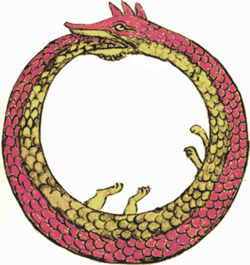Activists protest against the production of herbicides and GM (genetically modified) food
products outside Monsanto headquarters during its annual shareholders meeting in January.
Glyphosate, a widely used herbicide, joined the World Health Organisation (WHO)’s list of things that “probably” cause canceron Friday, March 20th.
The WHO’s International Agency for Research on Cancer (IARC) published an explanation of its report in The Lancet Oncology, which summarized the research it used to class glyphosate as “probably carcinogenic.” Other agents with that classification include anabolic steroids and “shiftwork that involves circadian disruption.”
It didn’t take long for scientists to weigh in on IARC’s report, and many doubt glyphosate actually poses a risk of cancer to people — especially at the levels found in food or the water supply.
IARC didn’t say what amount of glyphosate is enough to pose a risk, but did say the amount the general population is exposed to is “generally low.”
‘The evidence appears a bit thin’
Some scientists noted that the IARC report doesn’t contain any new research, and pointed to flaws in the studies the IARC chose to support its classification. They also noted that IARC looks at whether a substance has the potential to cause cancer, rather than the probability it will considering the way it’s used in the real world.“This sounds scary and IARC evaluations are usually very good, but to me the evidence cited here appears a bit thin,” Dr. Oliver Jones of the University of Melbourne told the Science Media Centre, a UK-based nonprofit that gathers reactions from independent scientists when science makes the news.
The IARC cited a few studies showing carcinogenic effects of glyphosate in mice, via a 2004 WHO and Food and Agriculture Organisation of the United Nations joint report on pesticides. But that report concluded that “glyphosate is unlikely to pose a carcinogenic risk to humans.”
As for studies in humans, Professor Sir Colin Berry of Queen Mary University of London said he wasn’t impressed with the ones IARC based their recommendation on.
“For human epidemiological studies there are 7 cohort and 14 case control studies [of glyphosate exposure], none of which support carcinogenicity,” Berry told Science Media Centre. (Berry is an industry consultant who also spoke on a Monsanto media briefing call.)
And those studies were in farm workers with occupational exposure, which would put them at high risk if glyphosate was in fact carcinogenic.
The studies IARC cites showing increased incidence of non-Hodgkin lymphoma with glyphosate exposure are no good, Berry argued, because non-Hodgkin lymphoma is actually a term used to refer to 43 different diseases.
“There is nothing here to suggest that the variety of genetic changes in these disease could be caused by these pesticides. This appears to be a rather selective review,” Berry told Science Media Centre.
Excluding industry research
Kathryn Guyton, a senior toxicologist at the IARC and one of the authors of the report, told Nature News that the IARC is indeed selective: The panel considered studies published in peer-reviewed publications and government reports, and excluded those submitted by industry groups.“In the case of glyphosate, because the evidence in experimental animals was sufficient and the evidence in humans was limited, that would put the agent into group 2A [probably carcinogenic to humans],” Guyton told Nature News. (“Limited evidence,” the IARC report explains, means that studies have positively linked exposure to glyphosate to cancer in people, but chance, experimental bias, and confounding could not be ruled out as the cause of that link.)
Still, David Eastman, a University of Califonia Riverside toxicologist, told NPR, “It’s conceivable that another group of experts might come to a different conclusion.”
Not just glyphosate
Even though the talk about glyphosate makes it sound like it’s the only thing in Monsanto’s herbicide to worry about, the truth is the herbicide contains other ingredients that may be the source of any increased risk of cancer.“It could also be that glyphosate itself isn’t the risk, but rather the compounds that glyphosate is combined with to arrive at the final formation,” health reporter Alice Walton wrote in Forbes.
Walton pointed to findings published by the German Federal Institute for Risk Assesment that influenced the European Union’s policy on the safety of glyphosate use. “There is convincing evidence that the measured toxicity of some glyphosate containing herbicides is the result of the co-formulants in the plant protection products,” the report stated.
Potential risk does not mean likely risk
In addition to the scientific discussion around the potential risks of glyphosate, it’s important to consider what IARC is actually saying in its classification. It’s not presenting new research, nor is it the last word.“The IARC process is not a risk assessment. It determines the potential for a compound to cause cancer, but not the likelihood,” Professor Alan Boobis of Imperial College London told Science Media Centre.
In other words, IARC is saying glyphosate could potentially cause cancer in certain circumstances, but not necessarily that it is likely to in the circumstances that people actually use it, as far as we know.
All that doesn’t mean glyphosate doesn’t cause cancer. Scientists just disagree on whether there’s definitive evidence yet to say for sure.
